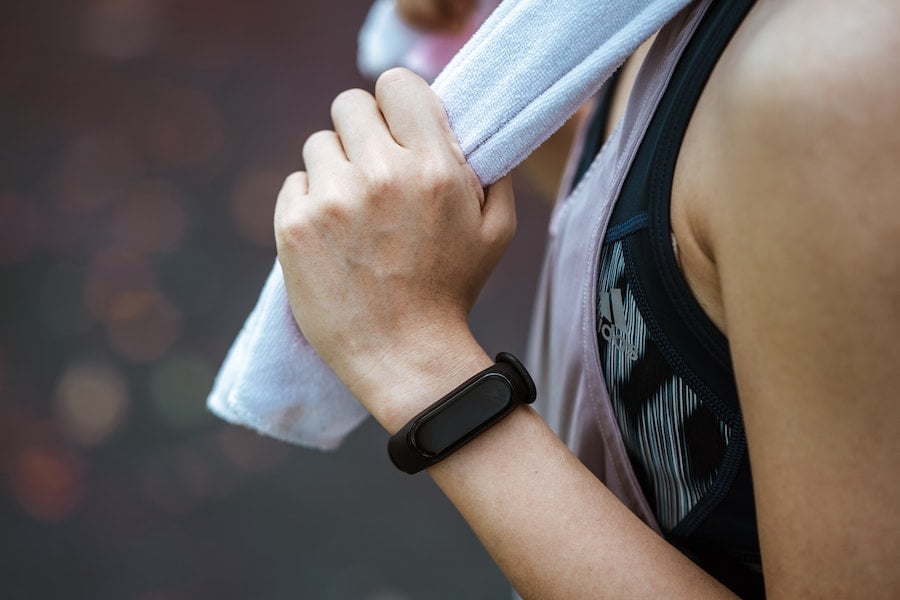Fitness trackers are becoming increasingly popular as people look for ways to become more active and improve their overall health. But do these devices really help people get in shape?
There is some evidence that fitness trackers can help people become more active. A study published in the Journal of the American Medical Association found that people who used a fitness tracker were more likely to meet their physical activity goals than those who did not use a tracker.
However, it is important to remember that fitness trackers are not magic devices that will instantly make you fit. They can be helpful tools, but they need to be used along with other healthy lifestyle choices, such as eating a balanced diet and getting enough sleep.
The science behind fitness trackers

Fitness trackers are becoming more and more popular as people become more health conscious. But how do these devices actually work? Fitness trackers use sensors to track your physical activity. They usually include a pedometer, which counts your steps, and an accelerometer, which measures your level of activity. The data from these sensors is used to calculate your calorie burn rate and estimate the distance you’ve traveled.
Most fitness trackers also have a heart rate monitor, which uses a light sensor to detect your pulse. This information is used to calculate your heart rate zones and help you gauge the intensity of your workout. All this data is synced to an app on your smartphone or computer, where you can view it in graphical form. This lets you see how active you’ve been over time and compare yourself to others.
How fitness trackers can help you get in shape
We all know how important it is to be physically fit. We also know that it can be difficult to find the time and motivation to get in shape. Fortunately, there are now fitness trackers that can help us reach our fitness goals. Fitness trackers are devices that you wear on your wrist or body that track your physical activity. They usually come with a companion app that helps you set goals and track your progress.
Most fitness trackers have sensors that track your heart rate, steps taken, and calories burned. Some also track your sleep patterns and stress levels. This data can be very helpful in designing a workout plan that is tailored to your needs. There are many different fitness tracker brands and models available, so it is important to do some research before purchasing one.
The benefits of using a fitness tracker
A fitness tracker is a device or application for monitoring and tracking fitness-related metrics such as distance walked or running, calorie consumption, and heart rate. Fitness trackers have become increasingly popular in recent years as people look for ways to become more active and improve their overall health.
There are many different types of fitness trackers available on the market, ranging from simple pedometers to more advanced devices that track heart rate and sleep patterns. There are several benefits of using a fitness tracker, including:
– Helps you to set and achieve goals: By tracking your progress over time, a fitness tracker can help you to set goals and see your improvement. This can be motivating to stick with your workout routine.
– Keeps you accountable: Wearing a fitness tracker is a good way to keep yourself accountable for your daily activity level.
Are there any drawbacks to using a fitness tracker?
According to a recent study, one in four Americans owns a fitness tracker. That number is expected to grow to one in three by 2020. While fitness trackers have become increasingly popular, there are some drawbacks to using them. One drawback is that fitness trackers can be inaccurate. They may not accurately track your steps, distance, or calories burned. This can lead to frustration and discouragement if you’re not seeing the results you expect.
Another drawback is that they can be expensive. Some high-end fitness trackers cost hundreds of dollars. If you’re not careful, you could end up spending more money than you need to on a tracker that doesn’t work well for you. Finally, fitness trackers can be intrusive. They often require you to input personal information such as your weight, height, and age.
How to get the most out of your fitness tracker
Fitness trackers are becoming increasingly popular as people look for ways to become more active and improve their health. There are a number of different fitness trackers on the market, so it can be difficult to know which one is right for you. Here are some tips to help you get the most out of your fitness tracker.
1. Set realistic goals. It’s important to set goals that you can realistically achieve with your fitness tracker. Otherwise, you may become discouraged and give up on using it altogether.
2. Find an activity that you enjoy tracking. If you don’t enjoy the activity you’re tracking, you’re less likely to stick with it. Find an activity that you enjoy and that motivates you to stay active.
3. Use your tracker as a tool, not a crutch.
As the fitness tracker market continues to grow, it is important to consider which device is right for you. There are a few key factors to consider when making your decision. First, think about what you want to track. Most fitness trackers will track steps taken, distance traveled, and calories burned. Some devices also track heart rate and sleep quality. Next, consider your budget.
Fitness trackers can range in price from $50 to $250. Decide how much you are willing to spend on a device. Finally, decide which features are most important to you. Do you want a tracker that syncs with your smartphone? One with a color screen? One that vibrates when you receive a call or text? There is no one perfect fitness tracker for everyone. But by considering these factors, you can find the best device for your needs.